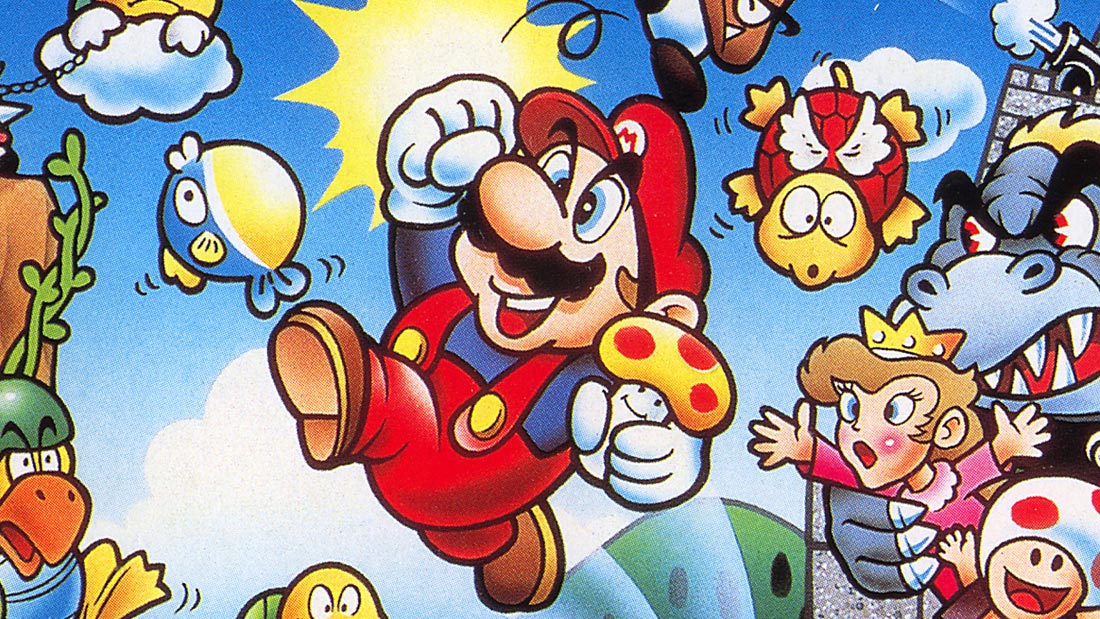By what was just a single frame, the 4:55 barrier has been broken, and the SMB speedrunning community is celebrating a historic occasion. The last time a second barrier was broken for the titles was in 2018, so for Super Mario Bros. this isn’t a common occurrence, and the emotion in Niftski’s video shows how big a deal it is. “It just feels insane that I have this good of a time in [Super Mario Bros.],” he tells me over Discord. “Me and a few other top level runners started the race to 4:54 after Miniland got his former world record speedrun of 4:55.230 [in February]… we all knew it was going to be a tough grind, but we were all dedicated to getting this time.” Reaching 4:54 is a big deal. To those outside of the community and looking in, though, it may be difficult to understand why it matters quite so much. “The significance of Niftski’s run comes with being the last second-milestone in the category’s 17-year-long span,” explains HitzCritz, a community member who also provided a lot of extra context on the r/speedrun subreddit. “The fastest known time to beat the game is 4:54.032 by HappyLee, which stands unbeaten since its submission on January 6th, 2011.” That 2011 speedrun HitzCritz mentions above is a Tool-Assisted Speedrun, or TAS. These are speedruns achieved with the assistance of an emulator’s tools to slow down the gameplay. Many of them are painstakingly done, frame-by-frame, and often involve techniques that humans would have trouble pulling off in a real-time run. The two types of speedruns are generally viewed as different things, but it’s more of a symbiotic relationship, with TAS runs teaching real-time runners what may be possible. As a result, top runners such as Niftski have been shaving frames and milliseconds off their speedruns and bringing their time closer to the 2011 TAS run. Pulling off these tricks and glitches themselves is no easy feat, either. The flagpole glitch, for instance, requires precise placement to cancel the flagpole animation and save time. Then there’s something like fast-acceleration, which HitzCritz helps to describe. “Due to the game’s physics, Mario accelerates faster when moving in the direction opposite to where he is facing. The idea of a fast-acceleration is that runners quickly turn Mario towards the opposite direction to accelerate quicker than normal.” Frame-perfect execution of fast-accelerations are required to approach World Record times, and originally runners didn’t even think breaking the 4:55 barrier was possible for non-TAS runs - some of the tricks that TAS runs used were either too difficult or simply impossible to pull off, as a video by Bismuth in 2018 explains. However, last year community member Kriller37 found a different way to pull off a difficult flagpole glitch in level 8-2 in TAS, and top runners would be able to implement it into their runs. The other time-saving method recently found is something called Lightning 4-2. But both Niftski and HitzCritz stress that while it is possible for humans to pull off a specific version of the trick, it’s not viable in a full speedrun just yet. “The thing that makes Lightning 4-2 a challenge is that it’s not simply a hard trick but rather the sheer optimisation of a single level down to the frame,” HitzCritz says. It simply requires too many frame-perfect moves to pull off. Niftski is the only one that’s succeeded at a Lightning 4-2 during a run and, according to him, “It took half a year just to get it. So unless something else is discovered to at least make that timesave easier, I don’t see it being used in runs.” In spite of Niftski’s incredibly impressive world record run, he stresses that this still isn’t the pinnacle of Super Mario Bros. speedrunning for the Any% category. “The other 4:54 contenders Miniland, LeKukie, Thelxinoe, jscarbo, Tree_05, and AldynSpeedruns have gotten extremely close to also achieving this milestone,” Niftski says, and HitzCritz agrees. “After looking through the game’s 17-year speedrunning history, it’s safe to say SMB1 speedrunners have a long way to go before they hit absolute perfection.” Runners know that there are a few frames that can be saved in the run, particularly in the difficult 8-4. But reaching the 4:53 milestone doesn’t seem to be in the future of speedrunning of Super Mario Bros., or at least not for a while, Niftski says. “There haven’t been any new timesave discoveries for the TAS since December 2010, so the odds of finding something new or saving time somewhere to make 4:53 possible is very unlikely to happen soon.” For a game as popular and optimized as SMB, it’s no longer about saving seconds and minutes, but instead saving a few frames wherever possible. While Niftski is the runner that broke past the 4 minute and 55 second barrier, this achievement is the effort of the entire SMB speedrunning community. HitzCritz lays it out best. “The ONLY reason why SMB1 is such a defining symbol of pure optimization is because of the community. Whenever the mainstream public sees a new Any% record, they are baffled as to how the game kept going further and further. The community, for the past 17 years, did nothing but motivate one another to keep achieving goals.” Those new goals might seem miniscule compared to less-optimized speedrunning games, where a new glitch or strategy can save seconds or minutes, but each new world record is a victory for that entire community. Just ask the other 1,200 runners on Super Mario Bros.’ speedrun.com leaderboard.
